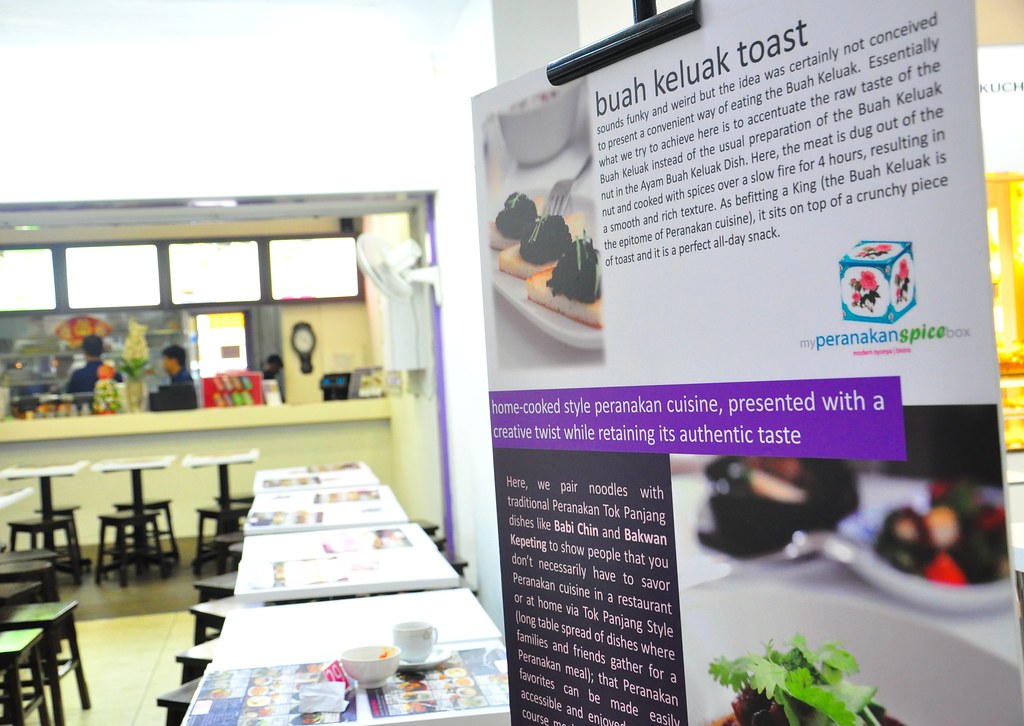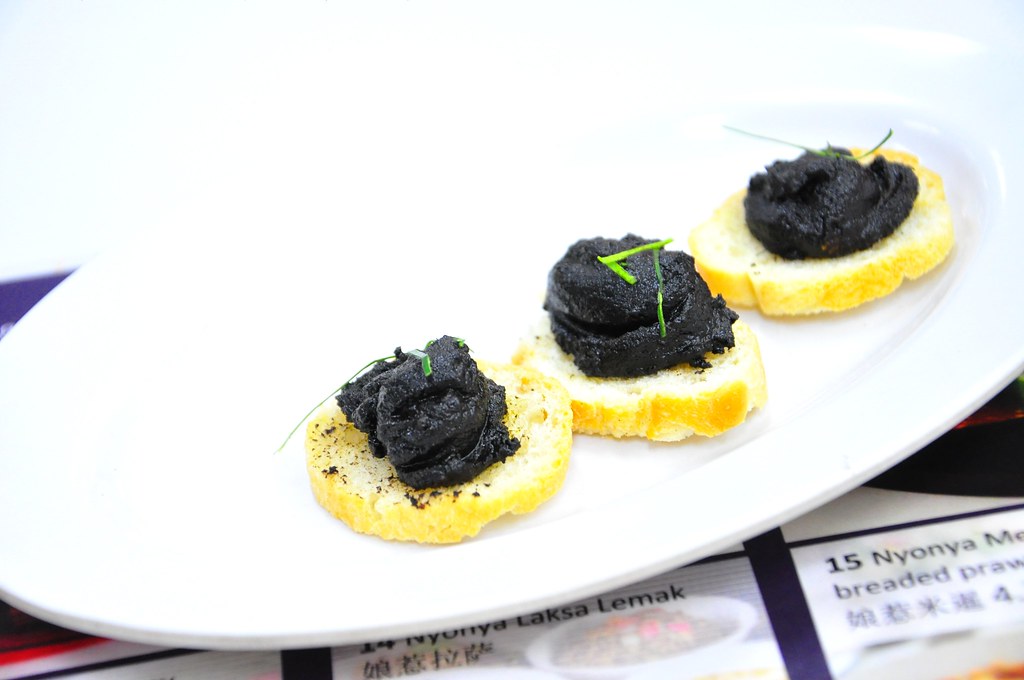SunnyWe get a good laugh with burnt/charred foods, and after that, it is usually hitam and Peranakan. Peranakan has a long history with black, the intensity of the colour relative to the atoms exploited to release their inherent potential smoky flavour.
Peranakan is famous for its sheen of onyx, like black pearls, the research usually boils down to two lanes; the hitam, sweetly-tasting pulut hitam or the hitam; and buah keluak, the black object of the brown-black indonesian seed owing to the viscosity of beef/chicken stews. It is mostly under these two categories, and the working out of their aesthetic implications it is already a feat.
At the new wing of Toa Payoh central, it is the flocking of eclectic diverse food ventures. My Peranakan Spice Box is the- 3 month old- one of them, which tries to be at the forefront of inventiveness with the latter, the buah keluak. The black seed, which is usually cooked with poultry till effervescent, has now it buttery attributes expended to used as a bread spread, atop silvers of carbohydrates for an urban-slick presentation.
P.S. Buah keluak toast zooms in on the nut itself, no longer veiled by the meltiness of the poultry, the subject of hot topic in a buah keluak dish. The earthliness of the nut can be tasted, blitzed till fine, somewhat savoury with tones of sour in between. Something which takes some taking used to; like olives, and definitely perfect portrayal of toast: paste black, mysterious yet precious. The sprigs of green used as french food art are assam leaves.














